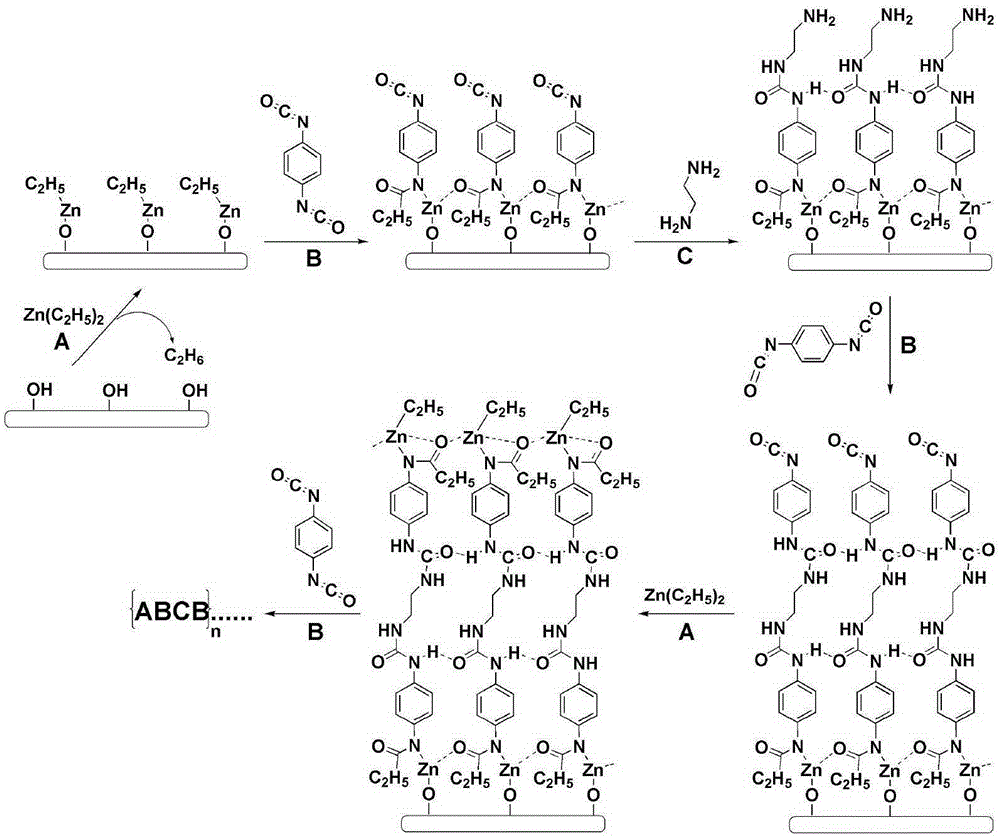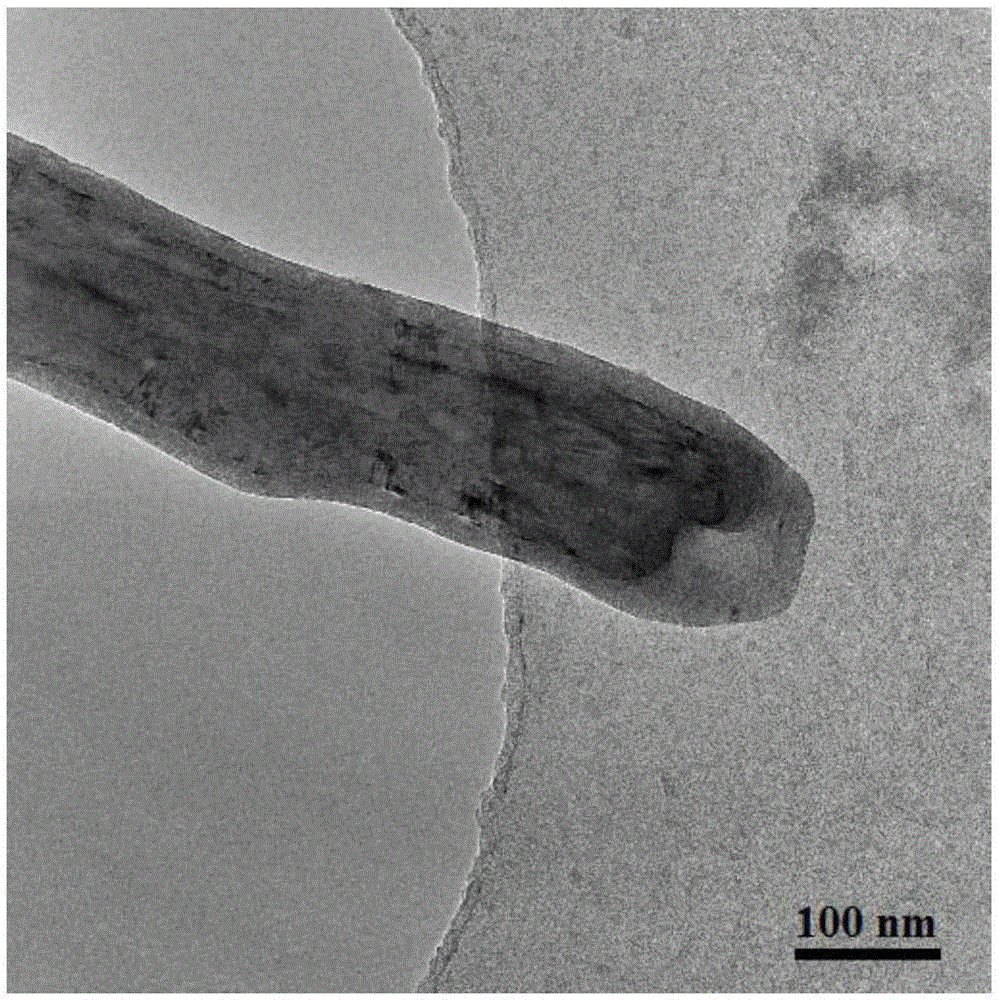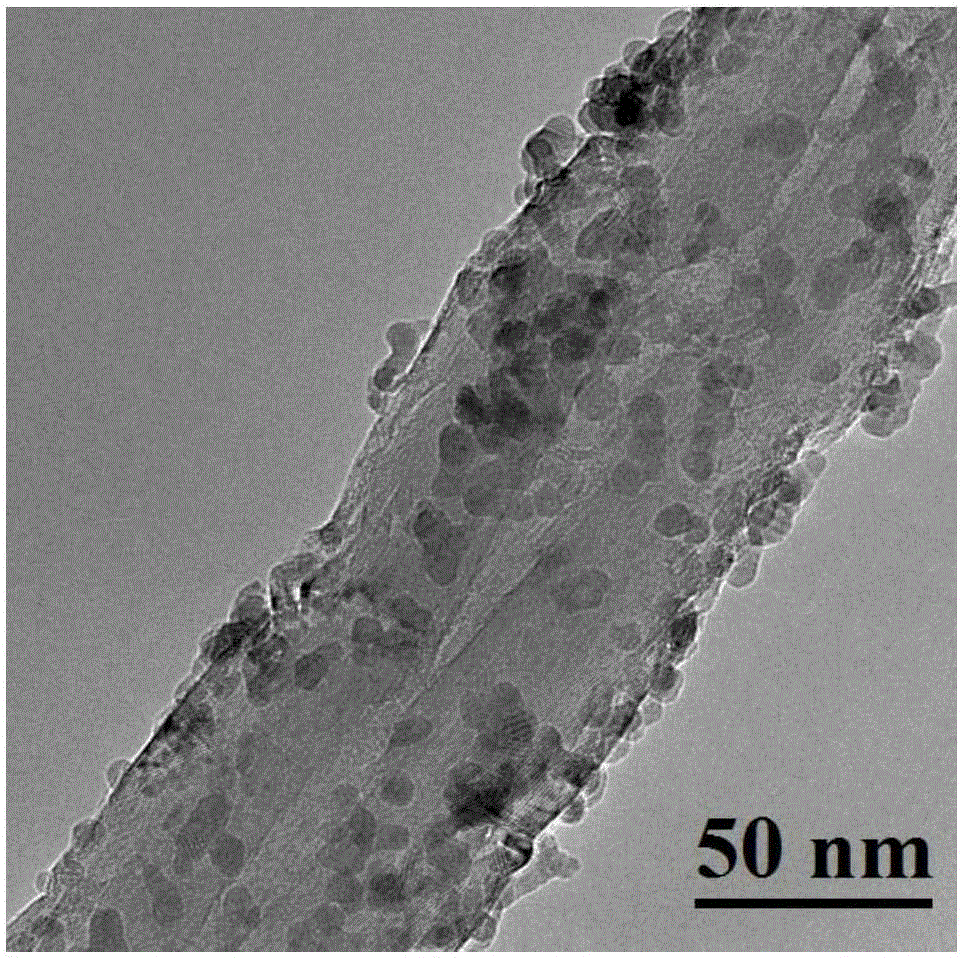Method for preparing metal-oxide compound nano catalyst by molecular layer deposition
A technology of molecular layer deposition and nano-catalyst, applied in the direction of metal/metal oxide/metal hydroxide catalyst, physical/chemical process catalyst, chemical instrument and method, etc., can solve the uniformity and interface structure of unsuitable oxide nanoparticles , reduced catalytic performance, and porous membranes occupying the active sites of metal particles, etc., to achieve excellent catalytic performance, simple and easy-to-control method, and good product preparation uniformity
- Summary
- Abstract
- Description
- Claims
- Application Information
AI Technical Summary
Problems solved by technology
Method used
Image
Examples
Embodiment 1
[0034] (1) Weigh 1.52g copper nitrate (Cu(NO 3 ) 2 .3H 2 O) and 1.5g of urea were dissolved in 10ml of water, 1.5g of multi-walled carbon nanotubes (CNTs) was added, and stirred at 150°C for 0.5h, after the aqueous solution was evaporated to dryness, the sample was cooled, and dried at 110°C for 12h to obtain carbon tube-supported copper hydroxide and basic copper nitrate samples (Cu / CNTs).
[0035] (2) The sample loaded with copper is mixed with ethanol to form a uniform suspension, the concentration of the sample is 0.1g / ml, coated on the surface of the glass sheet, evaporated to dryness and placed in the molecular layer deposition vacuum reaction chamber, the temperature of the chamber The temperature is 80°C, the cavity pressure is 50Pa, the cavity volume is 200ml, the carrier gas is nitrogen during the deposition process, and the flow rate is 1sccm-1000sccm, preferably 50sccm.
[0036] (3) Polyurea hybrid film deposited by molecular layer deposition technology:
[003...
Embodiment 2
[0046] Adopt the same method of embodiment 1 to test, and the difference with embodiment 1 is that the number of deposition cycles increases by 120 cycles, and the yield of gamma-valerolactone in levulinic acid hydrogenation is improved to 74%, showing that Zn-poly The thickness of the urea hybrid film can change the number of Cu-ZnO binding sites, and its TOF is 11.2h -1 . This indicates that more Cu-ZnO interfaces can be obtained by increasing the thickness of molecular layer deposition, which improves the intrinsic activity of the catalyst.
Embodiment 3
[0048] (1) Weigh 1.0g of copper acetate and dissolve it in 10ml of ethanol, add 1.5g of porous alumina, stir at room temperature for 12h, and dry at 110°C for 12h to prepare an alumina-loaded copper acetate precursor (Cu / Al 2 o 3 ).
[0049] (2) The sample loaded with copper is mixed with ethanol to form a uniform suspension, the concentration of the sample is 0.15g / ml, coated on the surface of the glass sheet, evaporated to dryness and placed in the molecular layer deposition vacuum reaction chamber, the temperature of the chamber The temperature is 90°C, the chamber pressure is 40Pa, the chamber volume is 100ml, and the flow rate of argon (carrier gas) during the deposition process is 1sccm-1000sccm, preferably 30sccm. .
[0050] (3) Polyurea hybrid film deposited by molecular layer deposition technology:
[0051] (a) The first pulse of dimethyl zinc vapor chemisorption on Cu / Al 2 o 3 On the surface of the sample, pump air to remove the physically adsorbed part;
[005...
PUM
 Login to View More
Login to View More Abstract
Description
Claims
Application Information
 Login to View More
Login to View More - R&D
- Intellectual Property
- Life Sciences
- Materials
- Tech Scout
- Unparalleled Data Quality
- Higher Quality Content
- 60% Fewer Hallucinations
Browse by: Latest US Patents, China's latest patents, Technical Efficacy Thesaurus, Application Domain, Technology Topic, Popular Technical Reports.
© 2025 PatSnap. All rights reserved.Legal|Privacy policy|Modern Slavery Act Transparency Statement|Sitemap|About US| Contact US: help@patsnap.com



